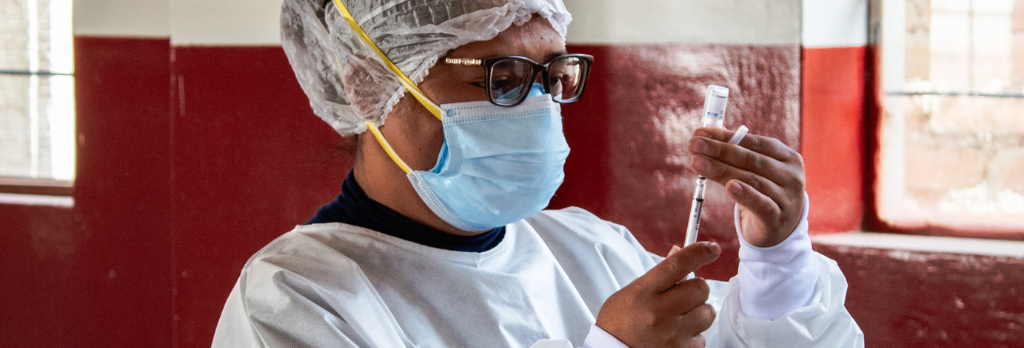Novavax COVID-19, Adjuvanted Vaccine: Overview and Safety
August 26, 2022GENERAL INFORMATION
Manufacturer: Novavax, Inc.
Number of Shots: 2 doses in the primary series, given 3–8 weeks apart.
People who are moderately or severely immunocompromised should also receive 2 doses, given 3 weeks apart (a 3rd primary dose is not currently authorized).
Booster Shot: Novavax COVID-19 vaccine is not authorized for use as a booster dose.
Type of Vaccine: Protein subunit
How Given: Shot in the muscle of the upper arm
Does NOT Contain: Eggs, preservatives, latex, metals
See full list of ingredients
Name: NVX-CoV2373
SAFETY DATA SUMMARY
- COVID-19 vaccines have undergone—and continue to undergo—the most intensive safety monitoring in U.S. history. Side effects that happen within 7 days of getting vaccinated are common but are mostly mild and only last a few days. Some people have reactions that affect their ability to do daily activities.
- Side effects throughout the body (such as fever, chills, tiredness, and headache) are more common after the second dose of the vaccine.
- Severe allergic reactions to vaccines are rare but can happen. Cases of myocarditis and pericarditis have been reported in people who received Novavax COVID-19 vaccine.
Learn more about vaccine safety monitoring after a vaccine is authorized or approved for use.
HOW WELL THE VACCINE WORKS
- Vaccines reduce the risk of COVID-19, including the risk of severe illness and death among people who are fully vaccinated.
- COVID-19 vaccines are effective. Clinical trials demonstrate that Novavax COVID-19 reduces the risk of COVID-19, including the risk of severe illness and death. However, studies from other COVID-19 vaccines have shown that protection declines over time especially with the Omicron variant.
- All FDA-approved or authorized COVID-19 vaccines provide substantial protection against COVID-19 hospitalization and death.
- CDC will continue to provide updates as we learn more.
Learn about Novavax’s clinical trial information for people 18 years and older.
NOVAVAX COVID-19 VACCINE INGREDIENTS
COVID-19 vaccine ingredients are considered safe for most people. Nearly all of the ingredients in COVID-19 vaccines are ingredients found in many foods—fats, sugar, and salts. The Novavax COVID-19 vaccine also includes harmless pieces (proteins) of the virus that causes COVID-19; they are pieces of what is often called the spike protein. After vaccination, the body creates an immune response to these protein pieces. This response helps protect you from getting sick with COVID-19 in the future. After the body produces an immune response, it discards all the vaccine ingredients, just as it would discard any substance that cells no longer need. This process is a part of normal body functioning.
All COVID-19 vaccines are manufactured with as few ingredients as possible and with very small amounts of each ingredient. Each ingredient in the vaccine serves a specific purpose as seen in the table below.
| Type of Ingredient | Ingredient | Purpose |
| Protein | SARS-CoV-2 recombinant spike protein | Causes an immune response that helps protect the body from getting sick with COVID-19 in the future. |
| Lipids (fats) | Cholesterol Phosphatidylcholine | Work together to help the recombinant spike protein enter cells |
| Adjuvant | Fraction-A and Fraction-C of Quillaja saponaria Molina extract. | Facilitates activation of the cells of the innate immune system. |
| Salts, sugar, and acid | Disodium hydrogen phosphate heptahydrate Disodium hydrogen phosphate dihydrate Polysorbate-80 Potassium chloride (common food salt) Potassium dihydrogen phosphate (common food salt) Sodium chloride (basic table salt) Sodium dihydrogen phosphate monohydrate Sodium hydroxide or hydrochloric acid Water | Work together to help keep the vaccine molecules stable while the vaccine is manufactured, shipped, and stored until it is ready to be given to a vaccine recipient. |
The vaccine may also contain very small amounts of ingredients from the manufacturing stage, which can be found in the EUA Fact Sheet.
INGREDIENTS THAT ARE NOT USED IN COVID-19 VACCINES
The above table lists ALL ingredients in the Novavax COVID-19 vaccine. There are NO ingredients in this vaccine beyond what is listed in the table. The Novavax COVID-19 vaccine has:
- No preservatives such as thimerosal or mercury or any other preservatives.
- No antibiotics such as sulfonamide or any other antibiotics.
- No medicines or therapeutics such as ivermectin or any other medications.
- No tissues such as aborted fetal cells, gelatin, or any materials from any animal.
- No food proteins such as eggs or egg products, gluten, peanuts, tree nuts, nut products, or any nut byproducts (COVID-19 vaccines are not manufactured in facilities that produce food products).
- No metals such as iron, nickel, cobalt, titanium, rare earth alloys, or any manufactured products like microelectronics, electrodes, carbon nanotubes or other nanostructures, or nanowire semiconductors.
- No latex. The vial stoppers used to hold the vaccine also do not contain latex.
To learn more, please visit https://www.cdc.gov/coronavirus/2019-ncov/vaccines/novavax.html.









